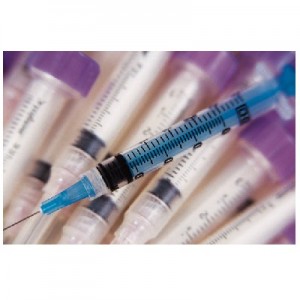Although pain is an important motivating factor for patients to visit the dentist, fear of pain is a major reason for delaying dental treatment. This is because dental treatment is often perceived as a painful experience by patients. However, with emphasis on prevention, minimal intervention and modern atraumatic treatment technique, this not necessarily true. Still, the dentist should develop the right attitude, approach and effective communication skills to deal with different types of patients. A caring and sympathetic attitude and gentle handling of patients will itself to a major extent relax them and reduce their anxiety. There are also several methods available to control pain and trauma during restorative treatment.
Methods to control PAIN
 1. Local Anesthesia
1. Local Anesthesia
The most commonly used method to control pain is by means of local anesthesia. Usually, local anesthetic injections are used to deposit the anesthetic solution close to the specific nerve fibres. Â This will produce adequate anaesthesia of the soft and hard tissues in the operating area.
Patients Factors:
Before administering local anesthesia, certain patient factors have to be assessed. These includes :
- Systemic Health
- Allergy
- Psychology
Systemic Health :
The dentist will enquire about the health status of the patient especially regarding cardiovascular system, central nervous system,liver,kidneys,thyroid, etc… to elicit any abnormalities in these systems.
Eg : In a hypertensive patient, the use of local anesthesia with a vasoconstrictor  should be avoided as it can cause a rise in blood pressure and increased heart rate.
Allergy :
When a patient gives a history of “sensitivity” Â or “reaction” to local anaesthesia, its use is contraindicated. Although allergic reactions are rare, when they occur they can cause an anaphylactic shock which may be immediate and fatal.
Psychology :
Dental patients are usually tense about receiving intraoral injections. A confident, positive approach by the dentist can improve patient co-operation and comfort.
The following measures ensure better acceptance of the injection by the patient :
- Use of a kind and gentle approach by the dentist
- Genuine concern for the patient’s problem
- Keeping the syringe and needle away from patients view
- Constant reassurance during the injection
Local Anaesthethic Agents
1. Lidocaine 2% + Epinephrine 1 :50,0000
2.Lidocaine 2% + Epinephrine 1 : 100,000
3.Bupivacaine 0.5% + Epinephrine 1 : 200,000
Advantages of local anesthesia
- Patients Cooperation : Once the local anesthesia has become effective, the patient is more relaxed and co-operative due to absence of pain
- Control of saliva : Complete anesthesia of all tissues in the operating site controls salivation
- Reduced blood flow : The vasoconstrictor in the local anesthetic reduces blood flow in the operating site thus controlling gingival bleeding in the area.
- Dentist efficiency : Due to the above mentioned factors, the dentist’s efficiency is greatly enhanced.
2. Premedications with antianxiety agents
This technique can be employed as an adjunct to local anaesthesia in order to calm the patient during the dental treatment. One precaution while prescribing these drugs is that the patient should not come unaccompanied during the dental appointment as his reflexes would be depressed.
The agents used are :
- Diazepam. Administered orally in a dose of 2 to 10 mg one hour prior to dental appointment
- Alprazolam. Administered 0.25 to 0.5mg one hour prior to the dental appointment.
- Midazolam. Admininstered 2 to 5 mg one hour prior to the dental appointment.
3.Inhalation sedation
Many patients with mild to moderate fear of dental treatment can benefit from conscious sedation with nitrous oxide and oxygen. In this method, the patient’s pain threshold is elevated while he is conscious of his surroundings. Though the initial cose to install the equipment is high, this technique is a safe alternative to general anaesthesia.
4. Hypnosis
This is another adjunctt to local anesthesia and may be used to control the tense patient. The dentist should be familiar with the principle of hypnosis. Through hypnosis, the patient can be made more relaxed and co-operative.
5. Electronic Dental Anesthesia
This is a recently available technique to control pain during dental procedures. It works on gate control theory of pain transmission. Used at a high frequency of more than 120Hz, EDA produces a sensation that may be described as “vibrating”, “throbbing”, “pulsing” or “t witching”
Electronic Dental Anesthesia acts by stimulating the larger diameter A fibres which transmit the sensation of touch, pressure and temperature. This will inhibit the transmission of pain impulses produced by the high-speed drill which are transmitted by the smaller A-delta and C-fibers. When the pain impulses fail to reach the brain, the sensation of pain does not occur.
Another mechanism which occurs during high frequency stimulation is that the blood levels of serotonin and endorphins are increased. They play a decondary role in controlling pain during dental treatment.
Several studies have reported EDA to be as successful as local anaesthesia during restorative procedures with patients reporting no soreness or discomfort soon after the treatment.